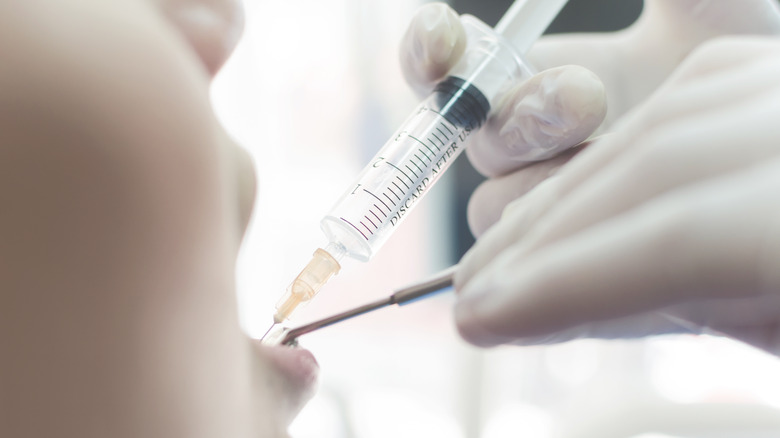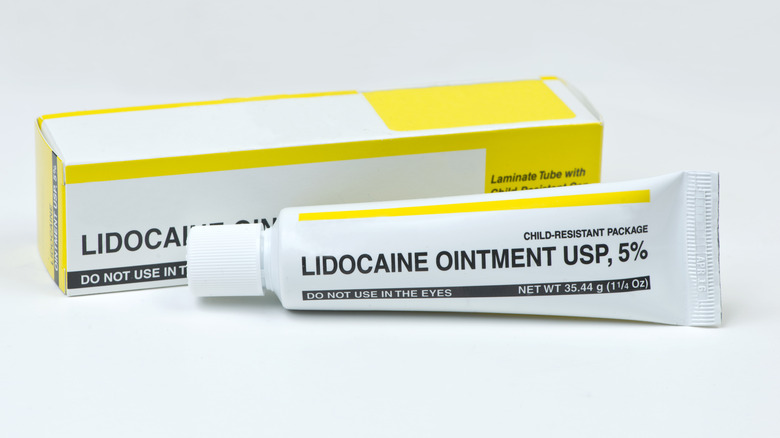Understanding The Different Types Of Local Anesthesia Used In Surgery
If you're having surgery, the type of anesthesia that will be used typically reflects the invasiveness of the procedure. However, other factors can come into play, including age, personal preferences, and health status. MyHealth Alberta explains that there are three types of anesthesia currently being used. The one many people commonly think of is general anesthesia, which involves a drug that makes a person completely unconscious until the surgery is over. A slightly less intense type is known as regional anesthesia, which targets a general area of the body and does not put a person to sleep. An example would be spinal or epidural, which is often given to those in child labor. Finally, we have local anesthesia, which is used if a procedure or surgery only needs to address one part of the body.
The American Society of Anesthesiologists delves deeper into local anesthesia, pointing out that it is ideal for short procedures to minimize side effects. On the other hand, after general anesthesia, it is necessary to give a person time to fully wake up from the sedation. There may also be side effects, such as nausea. Side effects related to local anesthesia simply include some residual pain or numbness in the area where the drug was administered. When local anesthesia is used, you won't feel pain during the surgery. However, since you are awake and aware, you will likely feel some pressure.
Within the realm of local anesthesia, there are various drugs and ways to administer them.
Local anesthesia can be injected or applied topically
The goal of local anesthesia is to numb a specific area of the body in order to carry out a procedure that would be painful without it, as per Healthline. Depending on the procedure, a doctor may also accompany the anesthesia with a sedative to keep a patient calm and prevent anxiety.
The type of local anesthetic you receive will fall into one of two main categories: topical or injected. The former involves some sort of gel or cream that is rubbed onto the skin or another surface of the body, such as inside the mouth and throat for dental procedures. You're likely to need topical local anesthesia for removing stitches, receiving an injection with a needle, and laser procedures, among others. The main goal of this category of local anesthetic is to reduce pain associated with the procedure.
While a local anesthetic that is injected is also given to lessen the pain, it's chosen for other occasions. Examples of procedures where this type of anesthetic is used include root canals, skin biopsies, the insertion of a pacemaker, and more.
The experts at WebMD add that there are multiple types of drugs that have an anesthetic effect, including bupivacaine, lignocaine, and prilocaine. Most of these drugs cease being effective within a relatively short amount of time — usually after an hour or so. However, a doctor can choose to accompany the anesthetic with other medications that extend its numbing effects if need be.


